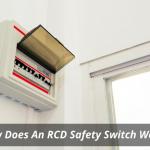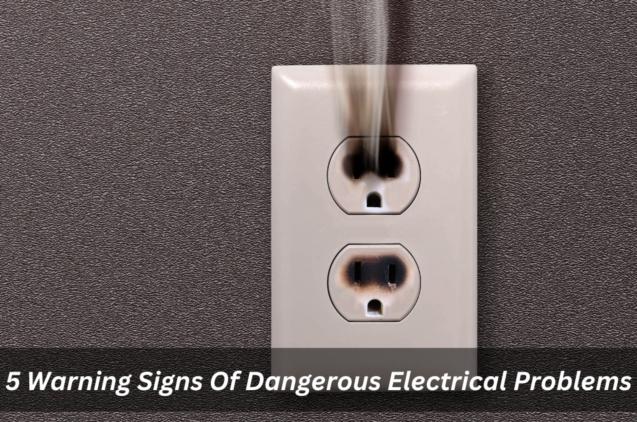
How Does An RCD Safety Switch Work?
By Electrician Near Me Sydney|September 14, 2022
What is an RCD switch and why should you consider them? There are two main types of devices – either self-resetting or automatic resetting devices. Which one is better for you?
This type of fault causes high current flow through the body creating dangerous levels of heat. If the system detects imbalances in such a condition, it will disconnect the line from the power point source and stop the electricity supply.
Secondly, it protects people against short circuits where an electrically charged object comes into contact with another part of an electrical safety circuit breaker. Thirdly, it prevents the excessive load from being placed across the mains voltage. Loads like light bulbs and fans will not work properly if they are connected to the wrong socket outlet.
Types of Residual Current Devices
RCD safety switches have been used in industry for many years to prevent damage to machinery. However, they can be found in residential applications as well. We'll discuss some types of RCD that are common and you may find in your home.
The most known example of an RCD safety device is probably the GFCI/RCD plug. It's a standard fitting that has 3 sockets on the side of the plug that can be plugged into any standard wall socket outlet. When all the 3 sockets are covered by the prongs of the plug, there is no possibility of connecting live wires together. The last 2 sockets are for neutral and ground respectively.
Another popular application of RCD safety devices is lighting fixtures, which use this kind of switch to turn off the lights when someone enters the room.
There are also many different types of residual current detectors used in homes. Most homeowners who want to install one simply need to call an electrician. You probably won't find them at hardware stores or big box retailers.
How do we use an RCD safety switch? In order to understand how to use an RCD safety switching device, let's take a look at how they work. A typical RCD safety switch looks something like this.
The first step is to determine whether the plug needs to be installed horizontally or vertically. Horizontal plugs are commonly used for receptacles, while vertical ones are common for outlets. If the plug is horizontal, then install it vertically so that the top of the plug faces upward.
Next, insert the screwdriver into the hole near the bottom of the plastic housing of the switch. Remove the screwdriver, but keep hold of the plastic housing. Now, pull out the screwdriver until the switch is fully exposed.
Then, slide the plastic housing over the wire connection between the mains and the switched circuit. Make sure that the plastic housing does not stick out past the surface of the wall.
Then, apply a small amount of glue to the back of the metal tab located on the top of the switch. Next, press the tab down firmly onto the wall. As soon as you touch the metal tab down, the adhesive will begin to harden and form a strong bond between the switch and the wall.
If you don't know exactly what colour to paint the wall, just pick a colour that goes with the rest of your house. Your electrician should be able to show you how to best finish the job.
Now that you've attached the switch, it's important to test it to make sure everything works correctly. Turn on the power to the entire household. Make sure that you're standing away from any grounded objects (like a sink) when testing the switch.
Once you feel confident that the switch is working correctly, remove it from the wall and test again to ensure that all connections are solid. If you notice anything wrong, then contact an electrician immediately.
Advantages of RCD Safety Switch
- Self-resetting: These switches are designed to automatically reset after power interruption. They don’t require an external reset test button to start working again. They are very reliable and convenient.
- Automatic Resetting: In case of power interruption, these switches can initiate their operation without user intervention (by sensing voltage drop).
This type of fault causes high current flow through the body creating dangerous levels of heat. If the system detects imbalances in such a condition, it will disconnect the line from the power point source and stop the electricity supply.
Secondly, it protects people against short circuits where an electrically charged object comes into contact with another part of an electrical safety circuit breaker. Thirdly, it prevents the excessive load from being placed across the mains voltage. Loads like light bulbs and fans will not work properly if they are connected to the wrong socket outlet.
Types of Residual Current Devices
RCD safety switches have been used in industry for many years to prevent damage to machinery. However, they can be found in residential applications as well. We'll discuss some types of RCD that are common and you may find in your home.
The most known example of an RCD safety device is probably the GFCI/RCD plug. It's a standard fitting that has 3 sockets on the side of the plug that can be plugged into any standard wall socket outlet. When all the 3 sockets are covered by the prongs of the plug, there is no possibility of connecting live wires together. The last 2 sockets are for neutral and ground respectively.
Another popular application of RCD safety devices is lighting fixtures, which use this kind of switch to turn off the lights when someone enters the room.
There are also many different types of residual current detectors used in homes. Most homeowners who want to install one simply need to call an electrician. You probably won't find them at hardware stores or big box retailers.
How do we use an RCD safety switch? In order to understand how to use an RCD safety switching device, let's take a look at how they work. A typical RCD safety switch looks something like this.
The first step is to determine whether the plug needs to be installed horizontally or vertically. Horizontal plugs are commonly used for receptacles, while vertical ones are common for outlets. If the plug is horizontal, then install it vertically so that the top of the plug faces upward.
Next, insert the screwdriver into the hole near the bottom of the plastic housing of the switch. Remove the screwdriver, but keep hold of the plastic housing. Now, pull out the screwdriver until the switch is fully exposed.
Then, slide the plastic housing over the wire connection between the mains and the switched circuit. Make sure that the plastic housing does not stick out past the surface of the wall.
Then, apply a small amount of glue to the back of the metal tab located on the top of the switch. Next, press the tab down firmly onto the wall. As soon as you touch the metal tab down, the adhesive will begin to harden and form a strong bond between the switch and the wall.
If you don't know exactly what colour to paint the wall, just pick a colour that goes with the rest of your house. Your electrician should be able to show you how to best finish the job.
Now that you've attached the switch, it's important to test it to make sure everything works correctly. Turn on the power to the entire household. Make sure that you're standing away from any grounded objects (like a sink) when testing the switch.
Once you feel confident that the switch is working correctly, remove it from the wall and test again to ensure that all connections are solid. If you notice anything wrong, then contact an electrician immediately.
Advantages of RCD Safety Switch
- They save lives! RCD safety switches help reduce the risk and prevent electrocutions. These switches provide protection against electrical accidents for anyone who comes in contact with their grounding rod.
- They protect everyone around you! Anyone who uses these kinds of switches can easily avoid being shocked because they know that they aren't coming into contact with a live or hot wire.
- They save money! There are several reasons why people choose to buy these kinds of switches.
- First, most manufacturers offer free installation services. This means that if you hire someone else to install these switches, it'll cost you less than hiring a professional electrician.
- Second, there are no parts to replace once they wear out.
- Third, these switches last longer than traditional outlets.
- Fourth, you don't have to worry about replacing them ever again.
- Fifth, the price is low compared to other home improvement projects.



